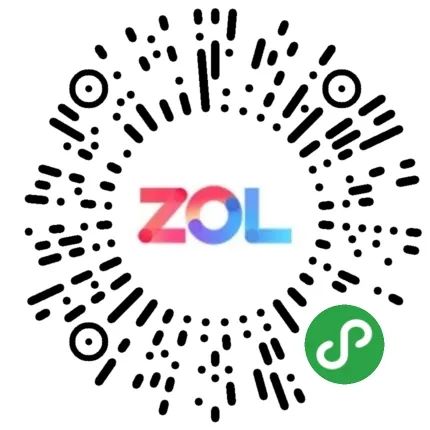“ OPPO is no longer just a mobile phone company; smartphones are merely a vehicle for OPPO to serve its users. In the future, not only OPPO but the entire industry will no longer have purely mobile phone companies.”
If this statement came from a media commentary, some might think it is just a gimmick: How can OPPO, which has ranked among the top in smartphone sales in recent years, not be a mobile phone company? Coincidentally, this statement was made by OPPO’s founder and CEO Chen Mingyong at the OPPO Future Technology Conference at the end of last year.
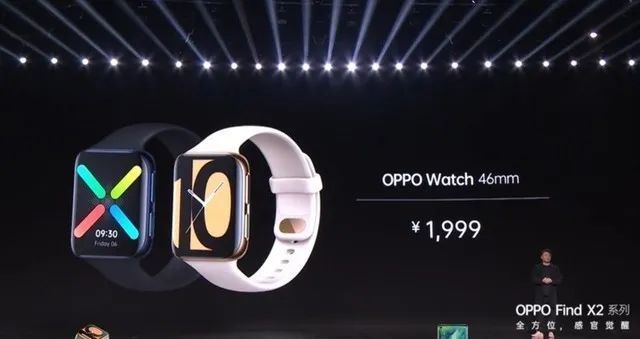 On March 6, the OPPO Watch series was launched, along with the already released OPPO Enco free smart headphones, which seem to confirm Chen Mingyong’s statement: OPPO is expanding its IoT scenarios centered around smartphones. In fact, the smart watch presented by OPPO is an innovative product that breaks the mold.■The OPPO Watch is affectionately nicknamed “No Pain Points”A very straightforward question: what does your dream smartwatch look like? First, it must be aesthetically pleasing and align with personal taste. Although previous watches were merely timekeeping tools, their fashion value often far exceeded their functional attributes. The style of a dream smartwatch can be metallic and mechanical or futuristic, but it must always adhere to the principle of being “good-looking.”A smartwatch without powerful features lacks soul; in other words, it is merely a large wristband disguised as a watch. A common understanding is: I may not use all the features of the device I buy, but it must not lack any.Finally, battery life must be long-lasting, which is a lesson learned by many smartwatch users. Smartwatches with larger screens and more features often do not have larger batteries, requiring daily charging, sometimes even more frequently than smartphones. This makes it difficult for some continuous monitoring functions to perform their intended all-day monitoring role, and the rapid power consumption makes it hard for users to feel secure in their usage.
On March 6, the OPPO Watch series was launched, along with the already released OPPO Enco free smart headphones, which seem to confirm Chen Mingyong’s statement: OPPO is expanding its IoT scenarios centered around smartphones. In fact, the smart watch presented by OPPO is an innovative product that breaks the mold.■The OPPO Watch is affectionately nicknamed “No Pain Points”A very straightforward question: what does your dream smartwatch look like? First, it must be aesthetically pleasing and align with personal taste. Although previous watches were merely timekeeping tools, their fashion value often far exceeded their functional attributes. The style of a dream smartwatch can be metallic and mechanical or futuristic, but it must always adhere to the principle of being “good-looking.”A smartwatch without powerful features lacks soul; in other words, it is merely a large wristband disguised as a watch. A common understanding is: I may not use all the features of the device I buy, but it must not lack any.Finally, battery life must be long-lasting, which is a lesson learned by many smartwatch users. Smartwatches with larger screens and more features often do not have larger batteries, requiring daily charging, sometimes even more frequently than smartphones. This makes it difficult for some continuous monitoring functions to perform their intended all-day monitoring role, and the rapid power consumption makes it hard for users to feel secure in their usage.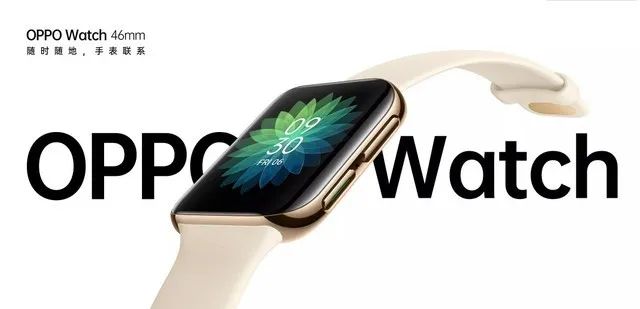 In short, a dream smartwatch must be good-looking, feature-rich, and have excellent battery life.However, the reason it is called a “dream” is that it is almost impossible to find a product that meets all these specific attributes: Practical ones are not good-looking, good-looking ones are not practical, and those that are both good-looking and practical are often expensive and have poor battery life.But the emergence of the OPPO Watch has changed this situation.1. 3D Curved Screen + Metal Frame: A Downward Attack from High-End Smartphone ConfigurationsUnlike before, the OPPO Watch 46mm version applies the 3D curved screen design found in high-end smartphones, providing a smooth feel and unique visual tension.
In short, a dream smartwatch must be good-looking, feature-rich, and have excellent battery life.However, the reason it is called a “dream” is that it is almost impossible to find a product that meets all these specific attributes: Practical ones are not good-looking, good-looking ones are not practical, and those that are both good-looking and practical are often expensive and have poor battery life.But the emergence of the OPPO Watch has changed this situation.1. 3D Curved Screen + Metal Frame: A Downward Attack from High-End Smartphone ConfigurationsUnlike before, the OPPO Watch 46mm version applies the 3D curved screen design found in high-end smartphones, providing a smooth feel and unique visual tension.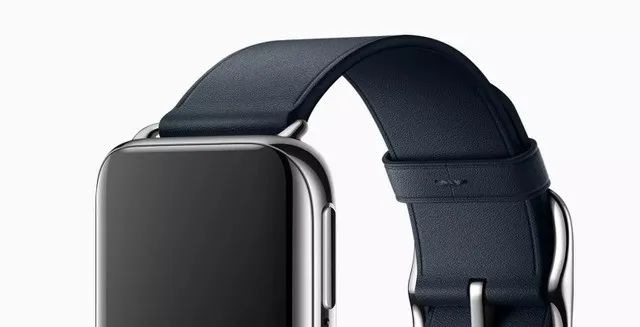 The standard version of the OPPO Watch and the 46mm version use an aluminum alloy frame, while the stainless steel version uses stainless steel material, with a 3D all-ceramic back and sapphire lens. The strap is made from first-layer calf leather sourced from Italy and supports one-click quick release for easy replacement.
The standard version of the OPPO Watch and the 46mm version use an aluminum alloy frame, while the stainless steel version uses stainless steel material, with a 3D all-ceramic back and sapphire lens. The strap is made from first-layer calf leather sourced from Italy and supports one-click quick release for easy replacement.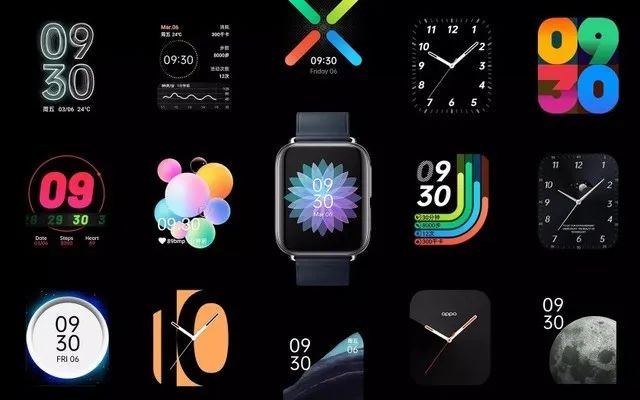 It is worth mentioning that the OPPO Watch also offers multiple creative watch faces to cater to different users’ aesthetic needs and supports AI-exclusive watch face customization, which can generate fashionable watch faces based on clothing styles through artificial intelligence algorithms, further enhancing the decorative attributes of the watch.Moreover, OPPO recently collaborated with Zcool to launch the “Everything Can Be a Watch Face” design competition, featuring various styles such as illustration, mechanical, and sports watch faces. It is believed that these excellent watch faces will also be integrated into the OPPO Watch in the future, providing users with more choices.2. ColorOS Watch + eSIM: Meeting Users’ Full-Scenario Needs for Wearable DevicesThe OPPO Watch does not use the WearOS common to other smartwatches but instead adopts a deeply customized ColorOS Watch system based on Android 8.1.In the former, the advantages of ColorOS Watch are very obvious: It provides a unified visual design with OPPO smartphones, and the Android kernel also brings more possibilities for app ecosystem adaptation, while also providing a better operating environment for IoT smart interconnectivity.
It is worth mentioning that the OPPO Watch also offers multiple creative watch faces to cater to different users’ aesthetic needs and supports AI-exclusive watch face customization, which can generate fashionable watch faces based on clothing styles through artificial intelligence algorithms, further enhancing the decorative attributes of the watch.Moreover, OPPO recently collaborated with Zcool to launch the “Everything Can Be a Watch Face” design competition, featuring various styles such as illustration, mechanical, and sports watch faces. It is believed that these excellent watch faces will also be integrated into the OPPO Watch in the future, providing users with more choices.2. ColorOS Watch + eSIM: Meeting Users’ Full-Scenario Needs for Wearable DevicesThe OPPO Watch does not use the WearOS common to other smartwatches but instead adopts a deeply customized ColorOS Watch system based on Android 8.1.In the former, the advantages of ColorOS Watch are very obvious: It provides a unified visual design with OPPO smartphones, and the Android kernel also brings more possibilities for app ecosystem adaptation, while also providing a better operating environment for IoT smart interconnectivity.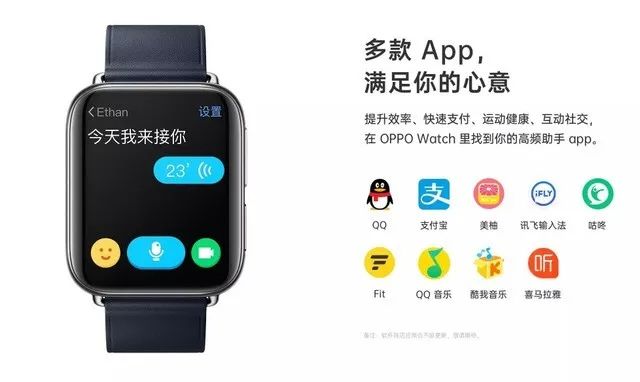 Combined with universal sensor hardware, the ColorOS Watch system exhibits powerful functionality. In addition to common health monitoring and exercise modes, the OPPO Watch can also implement the Breeno voice assistant, online music playback, and message reception and replies.
Combined with universal sensor hardware, the ColorOS Watch system exhibits powerful functionality. In addition to common health monitoring and exercise modes, the OPPO Watch can also implement the Breeno voice assistant, online music playback, and message reception and replies.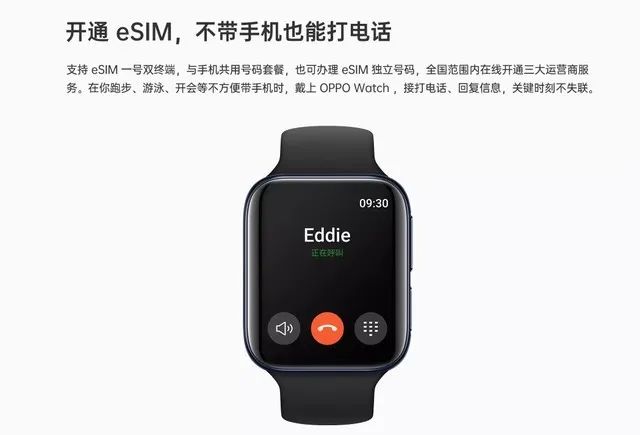 The support for eSIM functionality is also a major highlight of the OPPO Watch, allowing the watch to connect to the internet and make calls independently from the phone.In simple terms, an OPPO Watch with eSIM functionality is equivalent to a wrist-mounted phone.3. VOOC Flash Charge + Dual Engine Architecture: Perfectly Resolving the Conflict Between Functionality and Battery LifeThe most direct methods to solve smartphone battery life issues are to either increase battery capacity or enhance charging power. Of course, this approach is equally applicable to smartwatches: the OPPO Watch 46mm is equipped with a 430mAh battery, supporting 40 hours of smart mode usage; it can charge 46% in 15 minutes with VOOC flash charging and fully charge in 75 minutes.
The support for eSIM functionality is also a major highlight of the OPPO Watch, allowing the watch to connect to the internet and make calls independently from the phone.In simple terms, an OPPO Watch with eSIM functionality is equivalent to a wrist-mounted phone.3. VOOC Flash Charge + Dual Engine Architecture: Perfectly Resolving the Conflict Between Functionality and Battery LifeThe most direct methods to solve smartphone battery life issues are to either increase battery capacity or enhance charging power. Of course, this approach is equally applicable to smartwatches: the OPPO Watch 46mm is equipped with a 430mAh battery, supporting 40 hours of smart mode usage; it can charge 46% in 15 minutes with VOOC flash charging and fully charge in 75 minutes.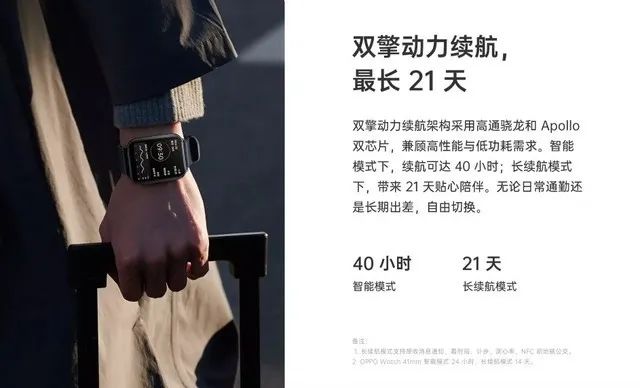 It is worth mentioning that the OPPO Watch adopts a dual-engine architecture with Qualcomm Snapdragon + Apollo dual chips, where the aforementioned smart mode is realized under the operation of the former.If users have lower functional requirements, switching to the building-supported long battery life mode can achieve up to 21 days of usage.Thus, the OPPO Watch perfectly addresses the aforementioned pain points, naturally evoking a sense of excitement among many users.However, we cannot help but ask: The smart wearable industry is not just starting; more and more manufacturers are recognizing the commercial value of this field and are deeply engaged in it. Why can OPPO, which is “new to the game,” create products that excite people? ■OPPO’s Secret to Making Watches: 15 Months of Tuning to Forge a Strong ExperienceAs OPPO’s first smartwatch product, the OPPO Watch’s impressive presentation can indeed be called stunning. As the saying goes, the first step is the hardest; how did OPPO achieve a successful launch?In fact, at the press conference, OPPO Vice President Shen Yiren revealed a key reason: “We studied almost all the smartwatch products on the market and conducted in-depth research on users.” During this research, OPPO identified five major pain points users experience with smartwatches (appearance, exercise, health monitoring, independent communication, and battery life), and the OPPO Watch addresses each of these pain points.For example, “Many people buy smartwatches to help them exercise better, but exercising can indeed be challenging and hard to stick with. Like my previous smartwatch, I wore it for a short time before it was left aside. I believe many friends who have purchased smartwatches have had similar experiences.
It is worth mentioning that the OPPO Watch adopts a dual-engine architecture with Qualcomm Snapdragon + Apollo dual chips, where the aforementioned smart mode is realized under the operation of the former.If users have lower functional requirements, switching to the building-supported long battery life mode can achieve up to 21 days of usage.Thus, the OPPO Watch perfectly addresses the aforementioned pain points, naturally evoking a sense of excitement among many users.However, we cannot help but ask: The smart wearable industry is not just starting; more and more manufacturers are recognizing the commercial value of this field and are deeply engaged in it. Why can OPPO, which is “new to the game,” create products that excite people? ■OPPO’s Secret to Making Watches: 15 Months of Tuning to Forge a Strong ExperienceAs OPPO’s first smartwatch product, the OPPO Watch’s impressive presentation can indeed be called stunning. As the saying goes, the first step is the hardest; how did OPPO achieve a successful launch?In fact, at the press conference, OPPO Vice President Shen Yiren revealed a key reason: “We studied almost all the smartwatch products on the market and conducted in-depth research on users.” During this research, OPPO identified five major pain points users experience with smartwatches (appearance, exercise, health monitoring, independent communication, and battery life), and the OPPO Watch addresses each of these pain points.For example, “Many people buy smartwatches to help them exercise better, but exercising can indeed be challenging and hard to stick with. Like my previous smartwatch, I wore it for a short time before it was left aside. I believe many friends who have purchased smartwatches have had similar experiences.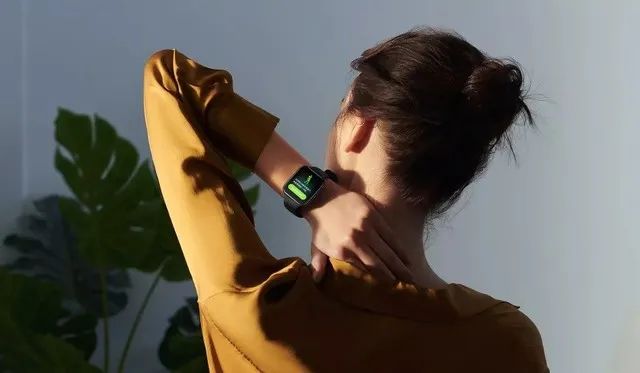 The OPPO Watch addresses this issue with its 5-minute easy fitness feature.This feature includes morning wake-up, full-body activation, long-sitting relaxation, quick fat burning, and sleep relaxation exercises, allowing users to work out during fragmented time.OPPO Vice President and President of the Emerging Mobile Terminal Division Liu Bo expressed a consistent viewpoint during the OPPO Watch launch press conference: “Finding the points that resonate with users” is the secret to OPPO’s breakthrough in the smartwatch market: starting from user needs and working backward to innovate the necessary functions for smartwatches.Of course, addressing consumer pain points is not as simple as it sounds. For OPPO, which has no prior experience in smartwatch-related R&D, it is even more challenging. “Transforming it into such a small product while balancing its appearance was a significant challenge for us.”
The OPPO Watch addresses this issue with its 5-minute easy fitness feature.This feature includes morning wake-up, full-body activation, long-sitting relaxation, quick fat burning, and sleep relaxation exercises, allowing users to work out during fragmented time.OPPO Vice President and President of the Emerging Mobile Terminal Division Liu Bo expressed a consistent viewpoint during the OPPO Watch launch press conference: “Finding the points that resonate with users” is the secret to OPPO’s breakthrough in the smartwatch market: starting from user needs and working backward to innovate the necessary functions for smartwatches.Of course, addressing consumer pain points is not as simple as it sounds. For OPPO, which has no prior experience in smartwatch-related R&D, it is even more challenging. “Transforming it into such a small product while balancing its appearance was a significant challenge for us.”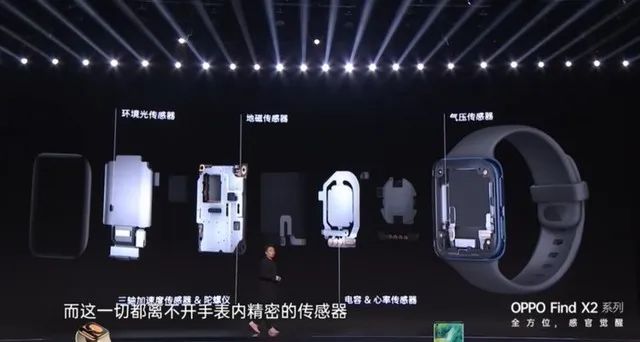 To enhance the appearance and display, OPPO invested heavily in customizing a curved flexible screen; to achieve a more reasonable structure, OPPO innovatively conducted multiple R&D efforts, increasing the number of structural patents for the OPPO Watch by 42; to optimize the interactive experience, the ColorOS Watch system, customized based on the Android 8.1 kernel, underwent nearly 15 months of development and debugging.Thus, we can conclude that the OPPO Watch appears before the public in a “no pain points” form, not merely as a result of OPPO’s marketing packaging, but rather from a deep understanding of consumer needs, integrating aesthetics, interaction, and experience into the product through thorough consideration and investment in practice, resulting in this product that excites people.However, in the harsh market competition, the quality of the product itself seems to be just one aspect. To truly penetrate this market, OPPO needs to do much more than just release a smartwatch. So, how will OPPO approach expanding into markets beyond smartphones?■Pursuing Comprehensive Experience Development: OPPO’s IoT Layout Seeks Stability and InnovationDuring the OPPO Watch launch, Shen Yiren raised a question: Is OPPO entering the smartwatch market a bit late?The era of wearable devices can be traced back to 2012, with shipments reaching 9.7 million units in 2013 and 22 million units in 2014.Recently, IDC released a global wearable market report for 2019, indicating that global wearable device shipments reached 336.5 million units, an increase of 89% year-on-year.
To enhance the appearance and display, OPPO invested heavily in customizing a curved flexible screen; to achieve a more reasonable structure, OPPO innovatively conducted multiple R&D efforts, increasing the number of structural patents for the OPPO Watch by 42; to optimize the interactive experience, the ColorOS Watch system, customized based on the Android 8.1 kernel, underwent nearly 15 months of development and debugging.Thus, we can conclude that the OPPO Watch appears before the public in a “no pain points” form, not merely as a result of OPPO’s marketing packaging, but rather from a deep understanding of consumer needs, integrating aesthetics, interaction, and experience into the product through thorough consideration and investment in practice, resulting in this product that excites people.However, in the harsh market competition, the quality of the product itself seems to be just one aspect. To truly penetrate this market, OPPO needs to do much more than just release a smartwatch. So, how will OPPO approach expanding into markets beyond smartphones?■Pursuing Comprehensive Experience Development: OPPO’s IoT Layout Seeks Stability and InnovationDuring the OPPO Watch launch, Shen Yiren raised a question: Is OPPO entering the smartwatch market a bit late?The era of wearable devices can be traced back to 2012, with shipments reaching 9.7 million units in 2013 and 22 million units in 2014.Recently, IDC released a global wearable market report for 2019, indicating that global wearable device shipments reached 336.5 million units, an increase of 89% year-on-year.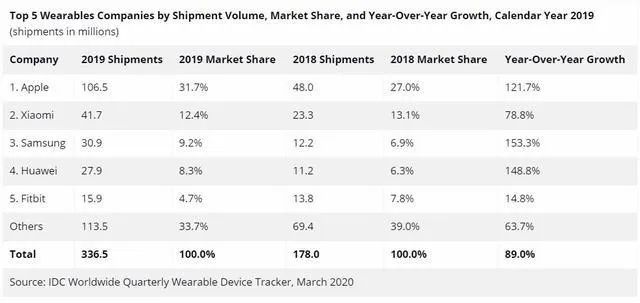 From the data, we can see that the wearable device market has been dominated by five major brands: Apple, Xiaomi, Samsung, Huawei, and Fitbit, covering two-thirds of the market share, with Apple leading by a significant margin at 31.7%. Apple, Samsung, and Huawei have all seen growth rates exceeding 100%.In 2016, the smartwatch pioneer Pebble went bankrupt, and in 2017, the smart band manufacturer Jawbone, estimated to be worth $3.2 billion, went out of business.A survey indicated that most wearable devices are used for less than a year, with nearly all users not exceeding a month of usage.The reason is simple: at that time, wearable devices did not perfectly address user pain points, and many consumers were merely impulsive buyers seeking novelty.The current prosperity of the wearable device market also contains some rules: Only brands that can excel in product experience and ecosystem development can establish a foothold in this market.It seems that the five major brands have solidified their positions. Is OPPO really late to enter the smartwatch industry?To answer this question, we need to consider it from the user’s perspective.We tend to continuously use a specific brand of smart wearable device based on three criteria: reasonable pricing, powerful product features, and a well-developed ecosystem.If there are better options in these three areas, switching to another brand becomes feasible for consumers who have never purchased smart wearable devices. Only when the product’s selling points and price attract them can new purchasing power be generated.
From the data, we can see that the wearable device market has been dominated by five major brands: Apple, Xiaomi, Samsung, Huawei, and Fitbit, covering two-thirds of the market share, with Apple leading by a significant margin at 31.7%. Apple, Samsung, and Huawei have all seen growth rates exceeding 100%.In 2016, the smartwatch pioneer Pebble went bankrupt, and in 2017, the smart band manufacturer Jawbone, estimated to be worth $3.2 billion, went out of business.A survey indicated that most wearable devices are used for less than a year, with nearly all users not exceeding a month of usage.The reason is simple: at that time, wearable devices did not perfectly address user pain points, and many consumers were merely impulsive buyers seeking novelty.The current prosperity of the wearable device market also contains some rules: Only brands that can excel in product experience and ecosystem development can establish a foothold in this market.It seems that the five major brands have solidified their positions. Is OPPO really late to enter the smartwatch industry?To answer this question, we need to consider it from the user’s perspective.We tend to continuously use a specific brand of smart wearable device based on three criteria: reasonable pricing, powerful product features, and a well-developed ecosystem.If there are better options in these three areas, switching to another brand becomes feasible for consumers who have never purchased smart wearable devices. Only when the product’s selling points and price attract them can new purchasing power be generated.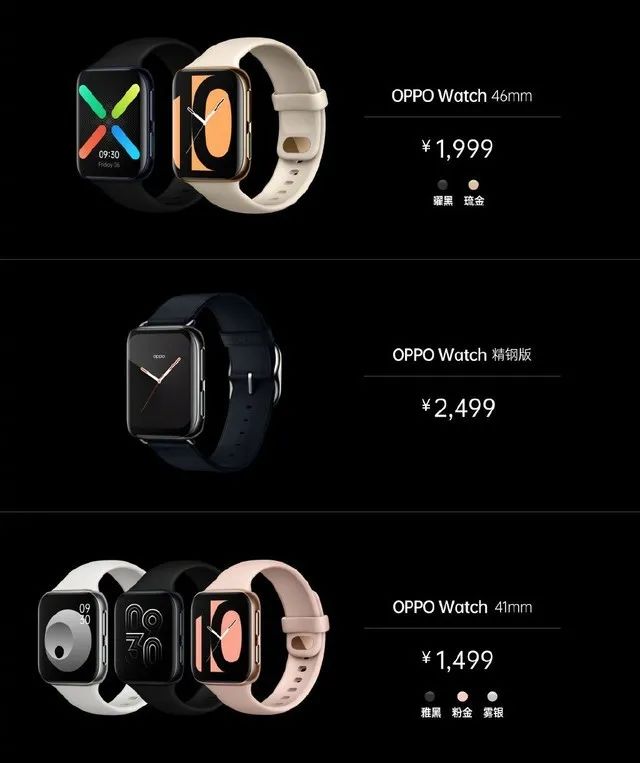 Thus, the OPPO Watch must possess such product strength to carve out a path in the modern smart wearable market. Coincidentally, from our analysis, the OPPO Watch is a product that meets these conditions. In a potentially lucrative market, the timing of entry is irrelevant; delivering a product that compels consumers to spend money is the true path to success.Typically, saying that OPPO Watch entered the market late is less accurate than stating that OPPO chose a cautious approach when entering the IoT space.We can glean this point from the R&D history of the OPPO Watch, as not all smart wearable devices can solve issues with independent systems. Over the past 15 months, OPPO has been preparing and building its IoT ecosystem, considering everything from technology and product development to human resource allocation.
Thus, the OPPO Watch must possess such product strength to carve out a path in the modern smart wearable market. Coincidentally, from our analysis, the OPPO Watch is a product that meets these conditions. In a potentially lucrative market, the timing of entry is irrelevant; delivering a product that compels consumers to spend money is the true path to success.Typically, saying that OPPO Watch entered the market late is less accurate than stating that OPPO chose a cautious approach when entering the IoT space.We can glean this point from the R&D history of the OPPO Watch, as not all smart wearable devices can solve issues with independent systems. Over the past 15 months, OPPO has been preparing and building its IoT ecosystem, considering everything from technology and product development to human resource allocation.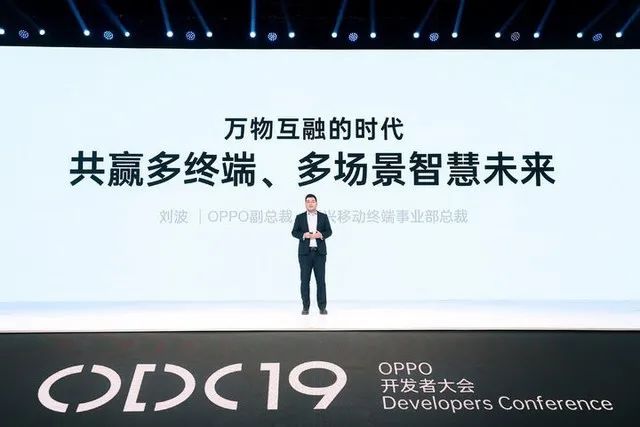 At the OPPO Developer Conference at the end of last year, OPPO announced that its IoT efforts would focus on four major scenarios: personal, home, travel, and office. In OPPO’s view, a multi-terminal, multi-scenario smart life experience is the future direction of IoT development. OPPO will build a new IoT system based on device interconnectivity, perception layer interoperability, big data processing and analysis, and service integration.On the personal front, OPPO’s smart phone, headphones, and watch triad have already formed a cohesive unit.According to Liu Bo, OPPO is likely to release a smart TV this year, marking its entry into the home sector.Additionally, OPPO’s office equipment may debut next year.Throughout this process, OPPO’s pursuit of IoT is straightforwardly directed at experience. OPPO clearly aims to be a “comprehensive experience technology company.” Liu Bo stated that OPPO intends to invest more energy into researching “deep-water technology” that will take five to ten years to develop, ensuring a high-quality experience for OPPO’s IoT products.■Conclusion
At the OPPO Developer Conference at the end of last year, OPPO announced that its IoT efforts would focus on four major scenarios: personal, home, travel, and office. In OPPO’s view, a multi-terminal, multi-scenario smart life experience is the future direction of IoT development. OPPO will build a new IoT system based on device interconnectivity, perception layer interoperability, big data processing and analysis, and service integration.On the personal front, OPPO’s smart phone, headphones, and watch triad have already formed a cohesive unit.According to Liu Bo, OPPO is likely to release a smart TV this year, marking its entry into the home sector.Additionally, OPPO’s office equipment may debut next year.Throughout this process, OPPO’s pursuit of IoT is straightforwardly directed at experience. OPPO clearly aims to be a “comprehensive experience technology company.” Liu Bo stated that OPPO intends to invest more energy into researching “deep-water technology” that will take five to ten years to develop, ensuring a high-quality experience for OPPO’s IoT products.■Conclusion
From the information currently available, it is hard to say that the OPPO Watch is not an excellent smartwatch, and its value extends beyond the product itself. It represents OPPO’s efforts in the IoT field, reflecting OPPO’s contemplation of the product itself and its understanding of IoT development, ultimately stemming from OPPO’s deep insight into consumer needs. How the OPPO Watch performs will be judged by the market.
